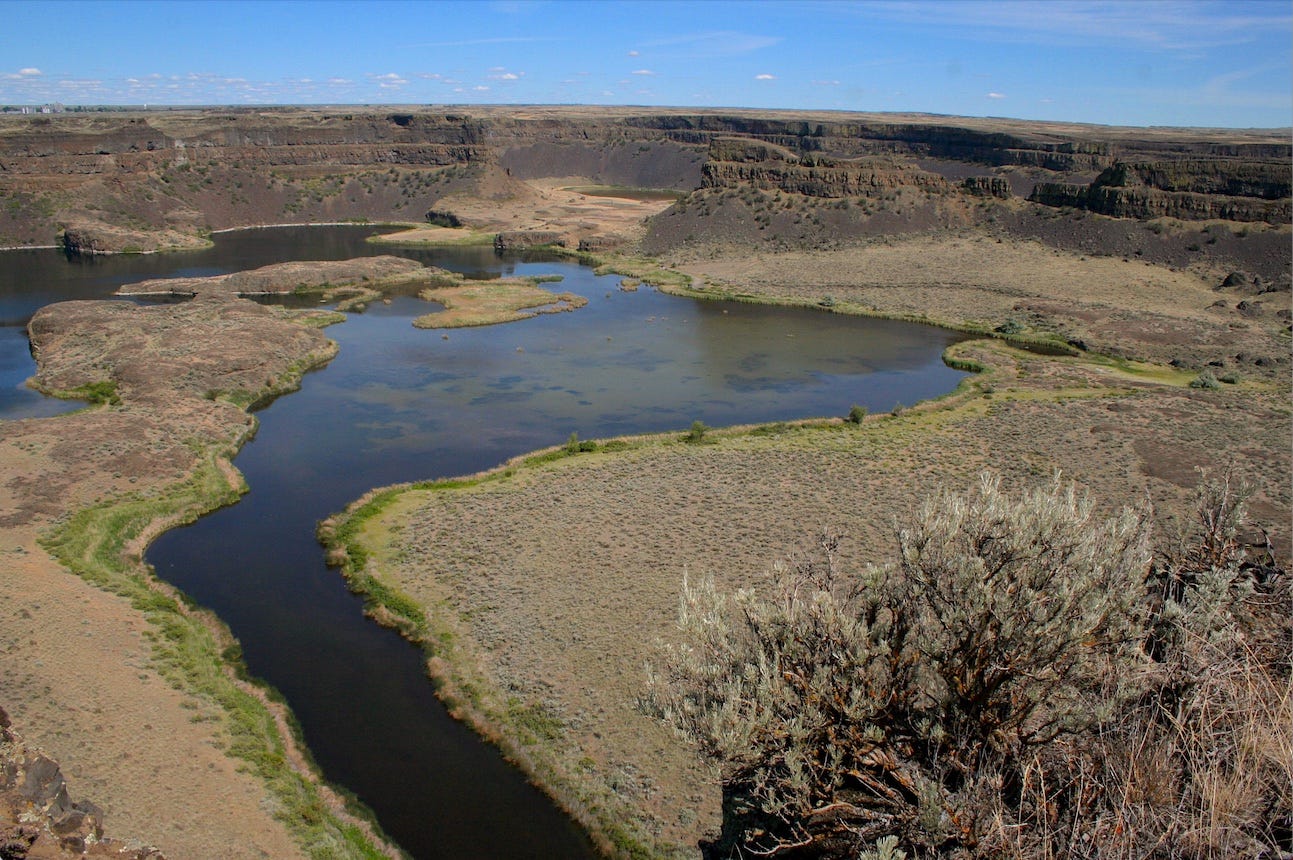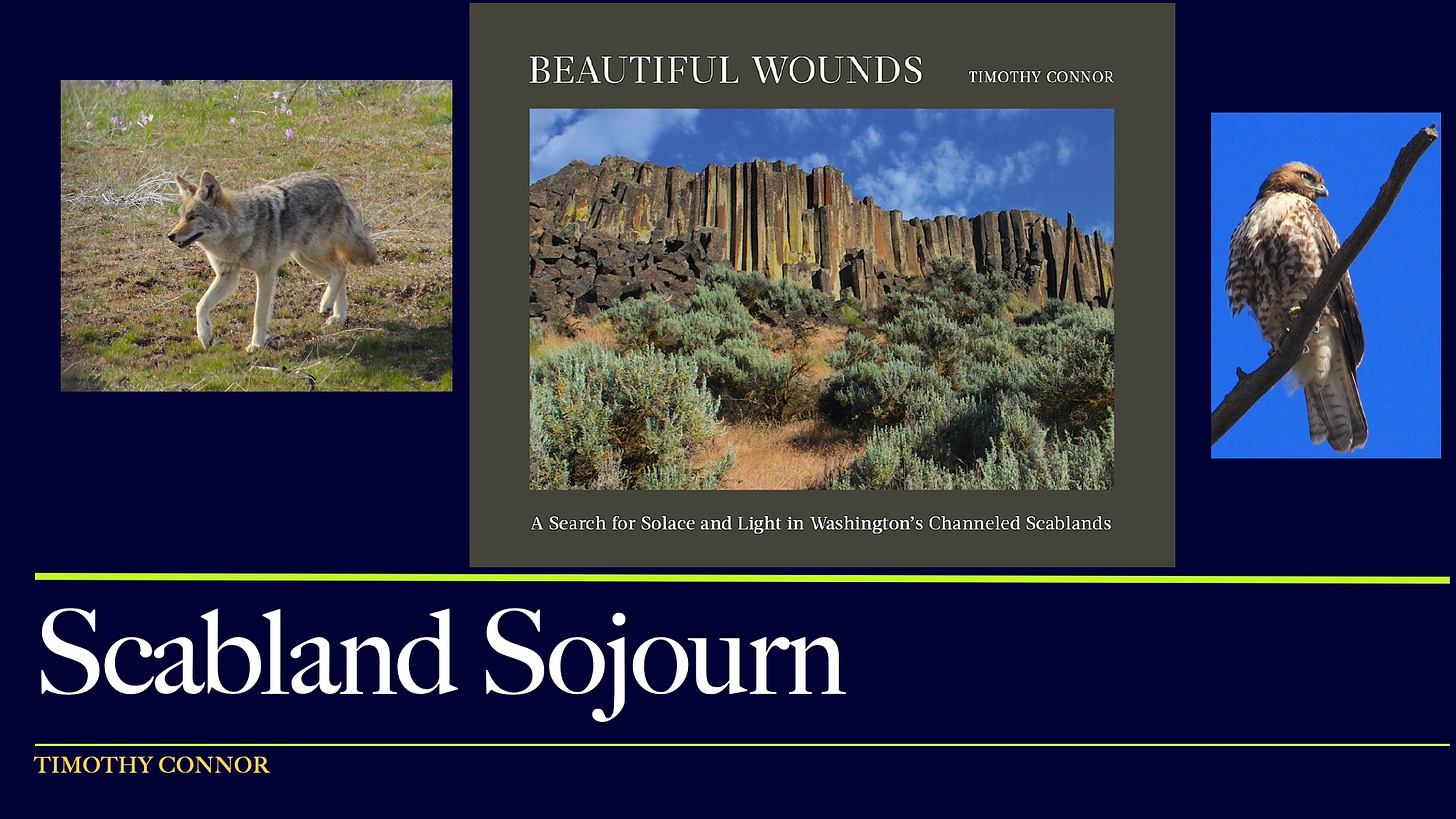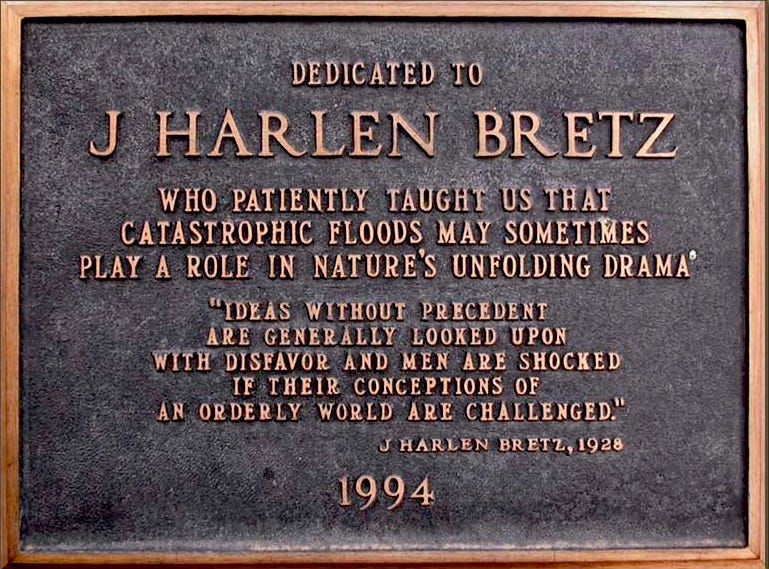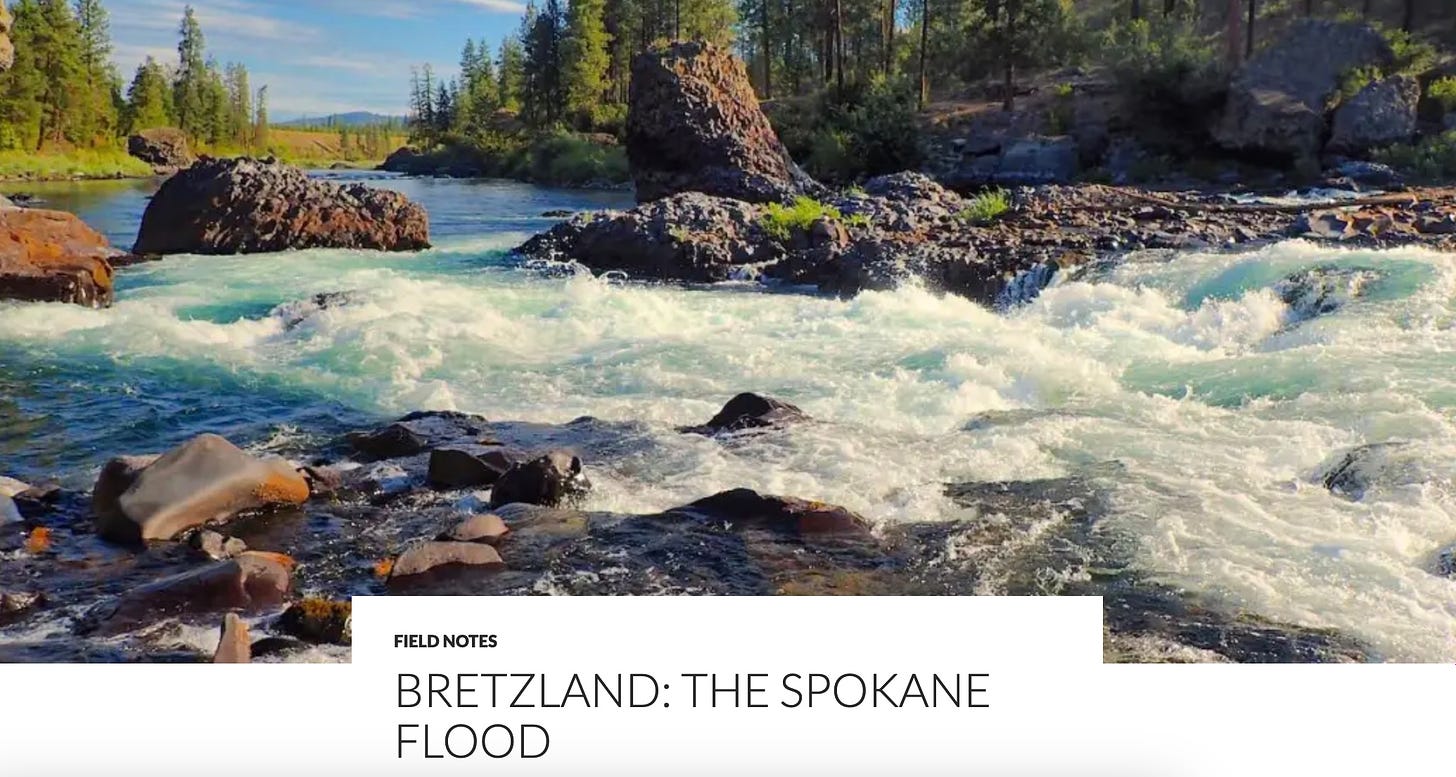Dry Falls cataract, just south of Coulee City, WA
“FLOODFEST ‘23”
Even if you lived in the inland Northwest for a good while there is some chance you’ve not visited one of North America’s great Earth features—the Dry Falls cataract at Sun Lakes-Dry Falls State Park. Not to be a nag about it but it’s important to experience the place at some point, and this Saturday would be as good a time as any.
Washington State Parks is hosting “Floodfest ’23” and I’ll be there, right off the bat at 10 a.m., with my “Scablands Sojourn” slide show and short film, inside at the Dry Falls Visitors Center.
•Getting there: It’s hard to miss Dry Falls if you’re anywhere near it. It really is one of those “holy bleep!” sights at first impression. From east or west on U.S. Highway 2, you’ll want to turn south on the state Highway 17, just west of Coulee City. In two miles you’ll see the park Visitors Center on the left, at the rim of the cataract. Obviously, it’s best to get there a bit early so you can gawk at Dry Falls a bit before you come inside to subject yourself to my rock and pony show. The Visitor’s Center bookstore carries my photography-lush homage to the scablands, Beautiful Wounds, so if you don’t have a copy you should be able to buy one there. I’ll be happy to sign one for you, or your Aunt Edna.
Plaque honoring J Harlen Bretz at the Dry Falls Visitors Center
•Worthy note: This year is the 100th anniversary of J Harlen Bretz’s epochal journal article, The Channeled Scablands of the Columbia Plateau. Upon publication in late 1923, the paper caused a great stir—to put it mildly—in the nation’s geology establishment. Bretz would rather not have been marked as maverick, but he became one through the reactions of his most eminent peers. They roundly rejected his theory that features like Dry Falls were creations of a catastrophic, Ice Age flood. The controversy lasted for nearly a half century. Bretz was finally vindicated and awarded the prestigious Penrose Medal in 1979.
•Additional (short) reading: Bretz meticulously mapped the scablands, including Dry Falls of course. A century ago, he wasn’t sure about the source of the floodwaters. He was quite sure, though, that the floodwaters funneled through what is now Spokane, carving out the magnificent gorge just west of the city. Early on Bretz referred to the flood as the “Spokane flood.” Subsequent field work determined the primary cause of the floods was the catastrophic, and repeated breach of a massive ice dam on the Clark Fork River east of present-day Sandpoint, Idaho. You can read my article on “The Spokane Flood” and how it shaped the Spokane area at this link to my Rhubarb Skies website.
—Hope to see you Saturday. Bring a friend if you can and sunscreen, to be sure…
Creek at Sun Lakes, just south of Dry Falls
—tjc









